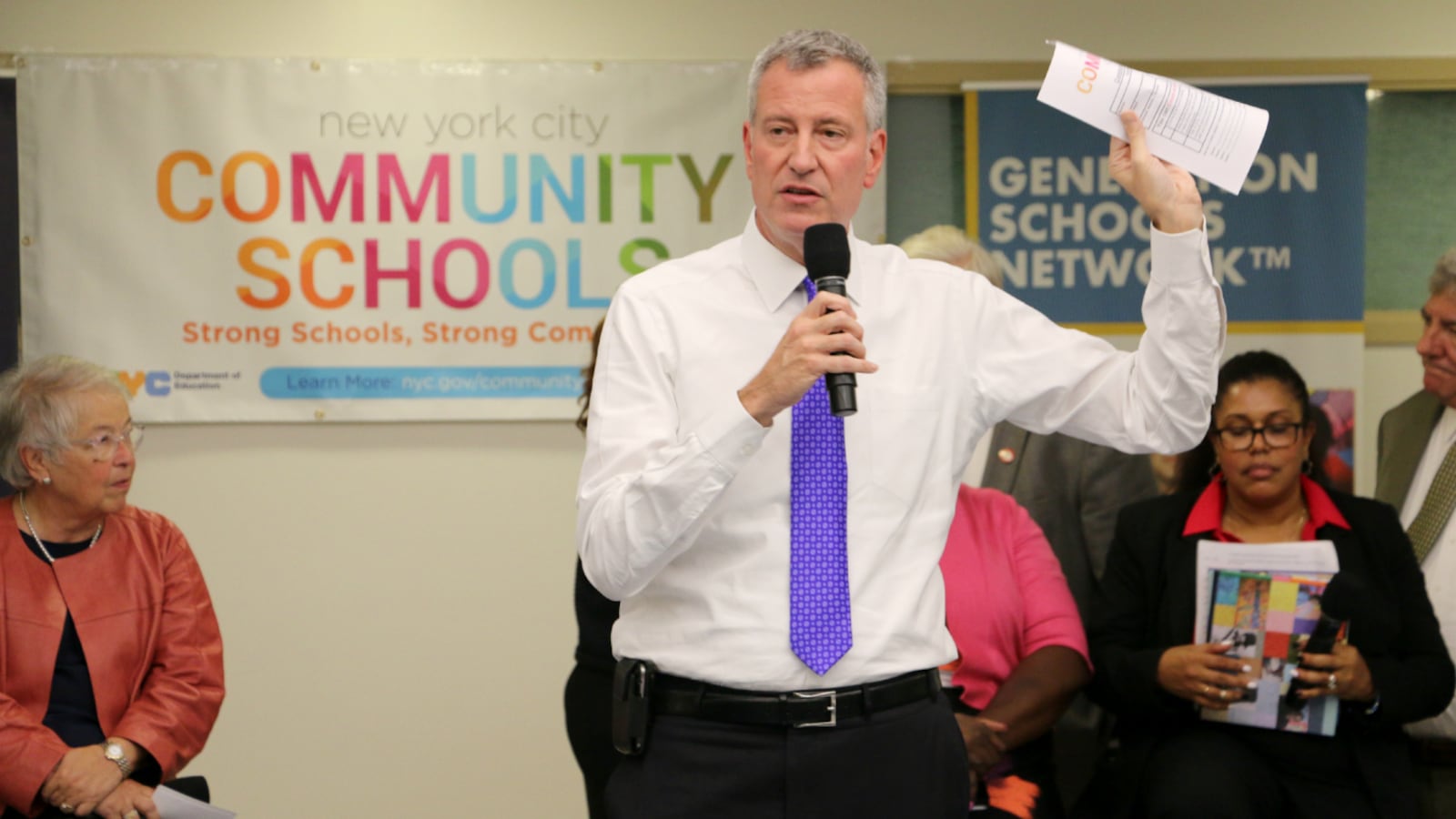New York City is planning to add more struggling schools to its “Renewal” turnaround program, according to two people briefed on the plan — which would be the first time it has expanded the controversial program’s roster since its launch in 2014.
The change comes at a pivotal moment for one of Mayor Bill de Blasio’s signature education initiatives, which he initially described as a three-year intervention and which has now reached its third birthday. Earlier this year, de Blasio promised to decide by November whether some of the 78 Renewal schools would be released from the program or shuttered — but he did not suggest that more low-performing schools might be brought on.
The additions to the $582 million program suggest the mayor sees it as a long-term strategy to rehabilitate troubled schools, not just a one-time fix for a single group of long-struggling schools.
Chris Caruso, the education department’s executive director of community schools, discussed the plans at multiple meetings over the past month with policy organizations and nonprofit groups embedded in those schools, according to people who attended the gatherings.
Officials would not confirm the plan to add more schools, but noted de Blasio’s pledge to determine which of the current Renewal schools should remain in the program, which have made enough progress to “graduate” out, and which have made such little progress that they should be closed.
“As the Mayor and Chancellor have said, [the review] will include closing schools and ensuring students are at a higher performing school the following year,” education department spokesman Michael Aciman said in a statement. “Any additional speculation is premature.”
The program initially included 94 of the city’s lowest-ranked schools, but 16 were later closed or combined with other schools.
Officials have cited a range of factors when deciding to close particular Renewal schools — including enrollment, test scores, and a school’s overall culture — but no hard-and-fast rules. Now it is unclear what criteria they would use to add new schools to the program.
In general, the city’s decision-making process when closing — and now adding — Renewal schools has largely been opaque, said Teachers College professor Aaron Pallas.
“I suspect that internally there is a lot more attention to data and metrics than they are reporting publicly,” he said. “It’s unfortunate that most of that is happening behind closed doors.”
The Renewal program is perhaps Mayor de Blasio’s most ambitious but also contentious education initiative — an effort to invest in struggling schools rather than shutter them, as often happened under his predecessor, former-Mayor Michael Bloomberg. Renewal schools receive a funding boost to pay for extra social services and staffers, extended school days, and teaching coaches to help improve instruction, among other support.
But so far, some observers say the program has fallen short of the mayor’s lofty promise of “fast and intense improvement” within three years. The program’s academic results — as measured by test scores and graduation rates — have been mixed, though the share of students who chronically miss school has fallen.
Pallas said adding more schools could be a sensible policy, given that “no one has found the failsafe way of turning around struggling schools.” But, he said, the city has not sufficiently made a public case about why its benefits outweigh the costs.
“Given the total price tag of the program,” Pallas added, “are we sure this is the best way to use the money?”

